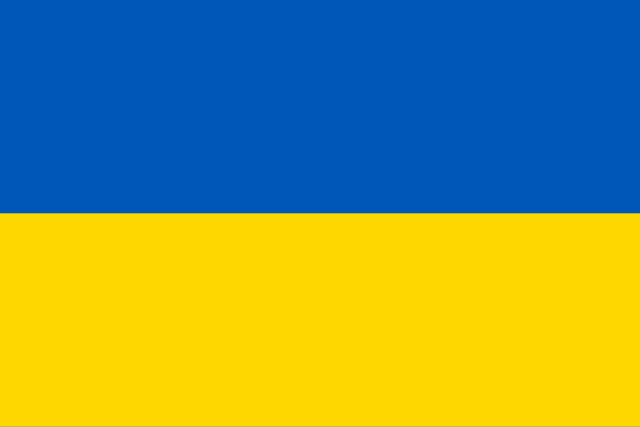Підтримуємо Вільну Україну
 We Support Free Ukraine
We Support Free Ukraine

Biodiversity Map
Taxa

Nigromacularia — subordinate taxa:
Taxon count: 1
-
Arthropodaphylum
Click to switch
to select orders
and filters > -
Hexapodasubphylum
Click to switch
to select orders
and filters > -
Insectaclass
Click to switch
to select orders
and filters > -
Coleopteraorder
Click to set
as the main taxon
and as a base
← of the left panel > -
Polyphagasuborder
Click to set
as the main taxon
and as a base
← of the left panel > -
Cucujiformiaseries
Click to set
as the main taxon
and as a base
← of the left panel > -
Chrysomeloideasuperfamily
Click to set
as the main taxon
and as a base
← of the left panel > -
Cerambycidaefamily
Click to set
as the main taxon
and as a base
← of the left panel > -
Lepturinaesubfamily
Click to set
as the main taxon
and as a base
← of the left panel > -
Lepturinitribe
Click to set
as the main taxon
and as a base
← of the left panel > -
Rutpelagenus
Click to set
as the main taxon
and as a base
← of the left panel > -
Nigromaculariasubgenus
Click to set
as the main taxon
and as a base
← of the left panel > -
Rutpela septempunctataspecies
Click to set
as the main taxon
and as a base
← of the left panel >
PL
YES
name status: synonym
BioMap ID: 1022607
taxonomy checked: YES
valid name: Rutpela septempunctata septempunctata
Polish Red List: EX?
Data on distribution in Poland

Statistics
- Records: 50
- Publications: 17
- Collections: 8
- Publication authors: 17
- Illustrations (iconography): 1
- Photos (specimen/observation): lacking
Taxon description
Gatunek zamieszkujący południowo-wschodnią część środkowej Europy oraz południowo-wschodnią Europę, wykazywany też z Azji Mniejszej, Kaukazu, Armenii i północnego Iranu. W środkowej Europie występuje na ciepłych stanowiskach zbliżonych do lasostepu. W Polsce chrząszcz ten należy do rzadkości. Notowano go z pojedynczych stanowisk tylko w czterech krainach, a ostatnie dane o jego połowach pochodzą sprzed 50 lat. Ogólnikowe wzmianki o występowaniu na Śląsku i w Galicji opierają się na danych odnoszących się do stanowisk leżących poza naszymi granicami. Zasiedla jasne drzewostany i zarośla, przylegające do nich łąki oraz zbocza kserotermiczne. Bionomia tego gatunku jest bardzo słabo poznana. Brak jest wiadomości o jego niższych postaciach rozwojowych. Imagines poławiano w czerwcu i lipcu, głównie na kwiatostanach roślin baldaszkowatych (Umbelliferae) oraz na kwiatach krwawników — Achillea L. oraz malin — Rubus L., poza tym chrząszcze wyhodowano z larw znalezionych w gałęzi leszczyny — Corylus avellana L.
Illustrations
... browse
 Rutpela
Rutpelaseptempunctata
septempunctata
External data sources
- Ostatnie rekordy
-
1139782
 ○
○ Cerambycidae: Rutpela septempunctata septempunctata, PL, Tatry, Tatry, UTM DV25, coll. ISEZ PAN: Wróblewski E. (Gutowski 1995b)
Cerambycidae: Rutpela septempunctata septempunctata, PL, Tatry, Tatry, UTM DV25, coll. ISEZ PAN: Wróblewski E. (Gutowski 1995b) -
1110271
 ⊡
⊡ Cerambycidae: Rutpela septempunctata septempunctata, BA, Novi Travnik, UTM YJ19, 1968, leg. St. Gruszka
Cerambycidae: Rutpela septempunctata septempunctata, BA, Novi Travnik, UTM YJ19, 1968, leg. St. Gruszka -
1059120
 ⊡
⊡ Cerambycidae: Rutpela septempunctata septempunctata, BG, Ginci, ad Berkovica, 2000, leg. R. Królik
Cerambycidae: Rutpela septempunctata septempunctata, BG, Ginci, ad Berkovica, 2000, leg. R. Królik -
1059119
 ⊡
⊡ Cerambycidae: Rutpela septempunctata septempunctata, BG, Ginci, ad Berkovica, 2000, leg. R. Królik
Cerambycidae: Rutpela septempunctata septempunctata, BG, Ginci, ad Berkovica, 2000, leg. R. Królik -
1050930
 ×
× Cerambycidae: Rutpela septempunctata septempunctata, BG, Kiten, 2006, leg. R. Plewa
Cerambycidae: Rutpela septempunctata septempunctata, BG, Kiten, 2006, leg. R. Plewa -
1050520
 ⊡
⊡ Cerambycidae: Rutpela septempunctata septempunctata, TR, Giresun Dağları, Giresun, ad Dereli, 2006, leg. A. Lasoń
Cerambycidae: Rutpela septempunctata septempunctata, TR, Giresun Dağları, Giresun, ad Dereli, 2006, leg. A. Lasoń -
1050519
 ⊡
⊡ Cerambycidae: Rutpela septempunctata septempunctata, TR, Giresun Dağları, Giresun, ad Dereli, 2006, leg. A. Lasoń
Cerambycidae: Rutpela septempunctata septempunctata, TR, Giresun Dağları, Giresun, ad Dereli, 2006, leg. A. Lasoń -
1050518
 ⊡
⊡ Cerambycidae: Rutpela septempunctata septempunctata, TR, Giresun Dağları, Giresun, ad Dereli, 2006, leg. A. Lasoń
Cerambycidae: Rutpela septempunctata septempunctata, TR, Giresun Dağları, Giresun, ad Dereli, 2006, leg. A. Lasoń -
1050517
 ⊡
⊡ Cerambycidae: Rutpela septempunctata septempunctata, TR, Giresun Dağları, Giresun, ad Dereli, 2006, leg. A. Lasoń
Cerambycidae: Rutpela septempunctata septempunctata, TR, Giresun Dağları, Giresun, ad Dereli, 2006, leg. A. Lasoń -
957860
 ×
× Cerambycidae: Rutpela septempunctata septempunctata, Balżyna, 1872, coll. MiIZ PAN: Tenenbaum Sz.
Cerambycidae: Rutpela septempunctata septempunctata, Balżyna, 1872, coll. MiIZ PAN: Tenenbaum Sz. - ... more
- Powiązane publikacje
-
Sláma M. 2006. Icones Insectorum Europae Centralis. Coleoptera: Cerambycidae. Folia Heyrovskyana B, 4, .
 Show records
Show records -
Gutowski J.M. 2004j. Kózkowate (Cerambycidae). [In:] Bogdanowicz W., Chudzicka E., Pilipiuk I., Skibińska E. (Eds.) Fauna Polski. Charakterystyka i wykaz gatunków. Tom I - Annelida, Arthropoda pro parte, Insecta pro parte (Coleoptera, Hemiptera, Hymenoptera, Lepidoptera). MiIZ PAN, Warszawa. pp. 49-53, 73-76.
 Show records
Show records -
Sama G. 2002. Atlas of the Cerambycidae of Europe and Mediterranean area. Volume 1. Northern, Western, Central and Eastern Europe. British Isles and Continental Europe from France (excl. Corsica) to Scandinavia and Urals. Kabourek, Zlín. 173 pp.
 Show records
Show records -
Starzyk J.R. 1999b. Rola kózkowatych (Coleoptera: Cerambycidae) w ekosystemach leśnych oraz ich znaczenie gospodarcze. Sylwan, 143(11):5-21.
 Show records
Show records -
Gutowski J.M. 1995b. Kózkowate (Coleoptera: Cerambycidae) wschodniej części Polski. Prace IBL, 811:3-190.
 Show records
Show records - ... more





